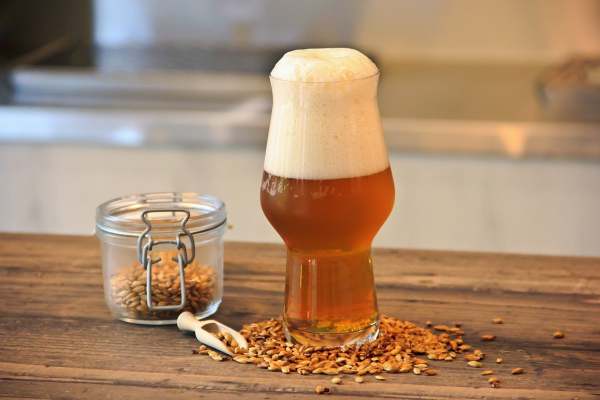Please introduce yourself and the work of Feedback.
I am Keenan and I work for Feedback Global on the Regional Food Economies projects in the North West of England. The work we do in the Liverpool City Region is focused on creating a food system that utilises what is available to us provincially and seasonally, with an emphasis on reducing food waste, shortening supply chains and making the food system more inclusive for everybody in our society.
We have a number of projects running at present and one of them is The Alchemic Kitchen. We create a second economy for produce that is perfectly good to eat but may be too big, small, or squishy and destined for landfill, by creating new products out of it.
A great example of this is our Scouse Sauces. We have developed a tomato ketchup using squishy tomatoes that the market are unable to sell on a regular basis. Similarly we have developed a brown sauce using windfall apples and the gluts of supermarket apricots that come our way once they have fallen foul of the ‘Best Before’ date.
Whilst we are developing products for market, we are only a small development space rather than a production kitchen, our aim is to demonstrate what can be done and hopefully be a catalyst for change in wider circles.
When thinking about the beer industry, what key waste streams could be better utilised and why might we want to do this?
The first thing that springs to mind is the malted grain (typically a mixture made up of barley, wheat and oats) that is boiled to make wort, the sugary water that the yeast ferments into alcohol.
Brewers' spent grain (BSG) is the most abundant by-product of the brewing industry, constituting approximately 85% (w/w) of the total by-products generated during beer production. We have worked on developing some products with BSG and reached the point where we were piloting a BSG granola, that used the peel from surplus citrus fruit, pumpkins that we roasted and made a caramel with, and seeds we dried for additional texture.
We would like to go further with the malt as an ingredient and have discussed making different flours with it and how we might use it as a wholegrain in baked products. Adding BSG can improve the nutritional value of breads. The addition of 10% spent grain increased the protein and essential amino acid content by 50 and 10%, respectively, and doubled the fibre content compared with traditional breads without BSG.
A lot of breweries do dispose of their spent grain in a relatively ‘green’ way, with much of it going to feed livestock, particularly cows. However, as there is a significant nutritional benefit to using BSG, even in relatively small quantities, the better outcome would surely be to introduce it into the food chain directly.
Another benefit to using BSG is that it is very cheap to get hold of, a lot of breweries are glad to let you have it free of charge and the secondary economy is clearly there for it as a raw ingredient that can be repurposed into nutritious baked goods.








